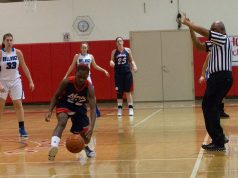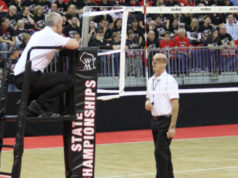The first thing most of us do in the morning is look at our alarm clock, watch or phone. When we look at our phone, we usually observe the time. When we get in our cars, we observe the car clock. When we are in a boring social situation, we tend to look at our watch or phone. Clock awareness as a basketball official can make us or burn us.
Knowing clock scenarios is an intangible of proper officiating. It’s a sign of awareness and being detailed, which is a plus with players, fans, administrators and coaches. It shows that you care about the game.
You have to know when the clock starts and stops. Also, you must remember that clock start and stop has nothing to do with the ball live and dead.
Basic principles.
On a jump ball, the game clock starts when the ball is legally touched, but the shot clock starts when a team gains control of the ball. During a throw-in, the game clock starts when the ball is legally touched by a player inbounds. On a missed free throw and the ball is to remain live, the game clock shall start when the ball is legally touched by a player on the floor. The shot clock starts when a player gains control of the missed free throw.
When does the game clock stop?
The game clock stops when the official signals a foul, held ball, violation or timeout. The game clock stops when an official stops the game for an injury. The game clock also stops when the officiating crew confers with the scorer or timer when there is a management situation.
The practical part about the rule is awareness. When an official stops the clock with a signal, he or she must always glance at the game clock and shot clock to know they have properly stopped. The same is true when an official is “chopping” the ball in on a throw-in, jump ball and missed free throw when there is a rebound involved. In that situation, you are making sure the clock and the game clock are properly started. In NCAA, with 59.9 seconds or less remaining in the second half or extra period, the clock is stopped when a field goal is scored. The officiating crew must be aware that the game clock must be stopped.
How do you learn clock awareness?
When going from trail to lead, find the game clock and the shot clock. That is also true when going from center to center and from lead to trail. That establishes a good habit of finding the clocks, which is great for awareness skills. When rotating in the lead position, take a peek at the shot clock and game clock at the far end of the floor. The clocks are in front of you as the center and trail in a rotation.
Know your differentials between the game clock and the shot clock. If the shot clock is improperly reset and you know the difference, do the math and correct the shot clock. That is true in small-college basketball where there are usually no monitors. It’s also true in some high school associations that play with a shot clock. The crew is often accepted very positively when it shows it is in the game and has awareness.
In NFHS games without a shot clock, it helps to know the game time to aid in your credibility when questioned about a 10-second count. For example, if you can say, “Coach the possession started at 4:11 and the clock shows 4:01.” You know for certain that 10 seconds has run off.
Clock awareness is an acquired skill that can be practiced, and once you achieve it you will get noticed as an official that is a student of the game and has skills welcomed by supervisors and assigners.
What's Your Call? Leave a Comment:
Note: This article is archival in nature. Rules, interpretations, mechanics, philosophies and other information may or may not be correct for the current year.
This article is the copyright of ©Referee Enterprises, Inc., and may not be republished in whole or in part online, in print or in any capacity without expressed written permission from Referee. The article is made available for educational use by individuals.


















